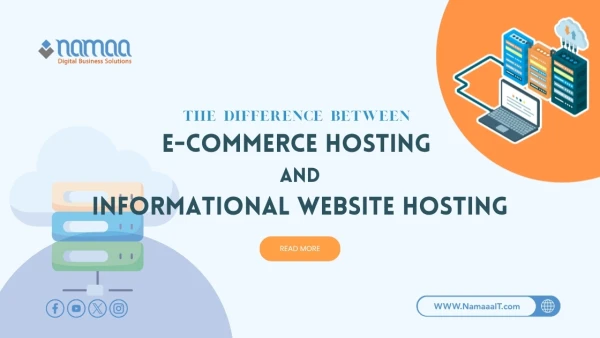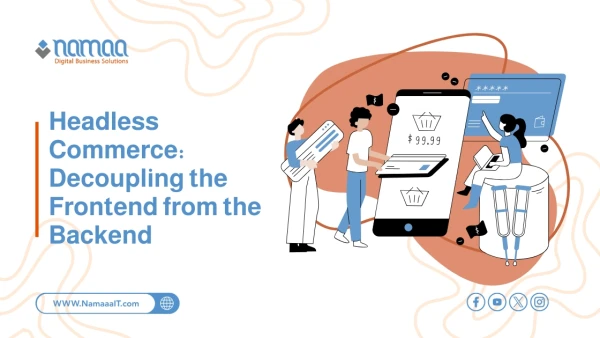Launching Your Online Store Is More Than a Technical Task — It’s a Business Venture
Starting an online store opens endless opportunities to reach new customers, build a powerful brand, and achieve growth not previously possible. However, with these opportunities come significant challenges. Many ambitious digital projects stumble—not due to a poor idea, but due to the lack of strategic planning.
Building a website is not just a technical task—it’s a full-fledged business project that requires a clear vision and solid foundation. Before you invest time and money in design and development, there are crucial steps to ensure your digital ship sails in the right direction from day one. This article isn’t a technical manual; it’s a strategic roadmap rooted in real-world experience, walking you through six pivotal steps that distinguish a struggling store from one launched confidently toward success.
Step 1: Clearly Define Your Goals — What’s the True Purpose Behind Your Store?
Before writing a single line of code or choosing a design template, sit down with yourself and your team and answer this simple but deep question: “Why do we want this online store?” The answer to this question is the cornerstone upon which everything else will be built. Launching without clear goals is like constructing a house without blueprints—chaotic and expensive.
Your goals should be SMART: Specific, Measurable, Achievable, Relevant, and Time-bound.
Examples of strategic goals for an online store:
- Increase direct sales: Aim to reach a set sales target within the first six months?
- Build brand awareness: Use the site as a premium digital storefront to elevate your brand image?
- Expand into new markets: Intend to reach customers outside your current region?
- Grow your customer database: Build a strong database of prospects for future marketing campaigns?
- Reduce branch load: Encourage simple online purchases to lighten in-store sales workload?
Defining these goals will directly shape your website’s design, features, user journey—and even which development company to choose.
Step 2: Assemble Your Internal Team — Who Will Steer the Ship Post-Launch?
A common mistake is treating the online store as purely an IT project or handing it off entirely to the development company. In reality, the developer builds the car—but your internal team must drive and maintain it.
Before kickoff, clearly assign internal members responsible for post-launch store operations. This core team should include:
- Marketing: Drives traffic, manages campaigns, analyzes user behavior
- Sales: Understands customer needs and pain points site should solve
- Operations & Logistics: Manages inventory, order fulfillment, and shipping
- Customer Support: Handles inquiries and complaints related to online orders
These aren’t just end users—they are your strategic partners from day one, fully invested in the project’s success.
Step 3: Productive Kickoff with Your Development Partner — From Goals to Technical Implementation
With clearly defined goals and a cross-functional team, it’s time to consult technical experts. Don’t go alone—bring your internal team to the kickoff meeting with the development company.
This meeting should be a strategic workshop, not just a price quote session. Your team explains what needs to be achieved (business goals), and the developer proposes how to achieve it technically. This ensures:
- Bridging the gap: Developers clearly understand your business context and end users
- Priority setting: Distinguish between must-have and nice-to-have features to optimize budget
- Ownership: When your team contributes to planning, they feel ownership post-launch
Step 4: Break the Project into Milestones — Quality Checkpoint by Checkpoint
Never agree to deliver the full project only at the end date—that’s a recipe for disaster. You’ll discover errors too late, and fixes will be expensive and complicated. A professional approach breaks the project into clear, agreed-upon milestones, each deliverable being a testable functional part of the site.
Example breakdown:
- Design of homepage and product pages (no coding)
- Product catalog browsing and add-to-cart functionality
- Checkout process with payment gateway integration
- Admin dashboard for managing products and orders
Why milestone testing matters: After each milestone, your internal team rigorously tests it. This catches misunderstandings or issues early, allowing adjustments before moving on. The final product then aligns precisely with expectations.
Step 5: Secure Ongoing Support — Your Post-Launch Safety Net
Your site is live—congratulations! But the real work begins now. Like cars, websites need ongoing maintenance and support. What if a critical bug breaks payments, or a security flaw emerges?
Skipping a clear post-launch support plan is a major risk. Before finalizing your contract, clearly define your support terms with the development company, including:
- Support period: 3 months, 6 months, a year? Included or billed separately?
- Channels: Email, ticket system, phone?
- SLA response times: Maximum time for critical vs. regular issues
- Scope: Bug fixes, security patches included; feature requests/design tweaks excluded
Support isn’t a luxury—it’s insurance to maintain your online business.
Step 6: View the Bigger Picture — The Website Is Only One Pillar
Remember: a successful e-commerce business is built on three pillars—and the site is just one of them. Focusing solely on tech while neglecting the others leads to failure.
Technical Solution: Your website—fast, secure, and user-friendly (covered by steps 1–5).
Operations: The behind-the-scenes engine:
- How are products photographed and described?
- How is inventory updated on the site?
- Which shipping companies will you use—and how will you track orders?
- How will your customer service team handle returns and exchanges?
Marketing: The fuel that brings customers in. The best site is useless if no one knows it exists. You need a clear plan to:
Get your first 1,000 visitors: Paid ads, SEO, influencer marketing, content
Convert visitors into buyers: Promotions, coupons, smooth user experience
Retain customers: Email campaigns, loyalty programs for repeat purchases
It’s More Than a Website—It’s a Sustainable Digital Business
Launching a successful online store isn’t just about technical know-how—it demands strategic planning, cross-team collaboration, and business-wide thinking. By following these six steps, you’re not just building a website—you’re laying a solid foundation for a sustainable, competitive digital venture.
Remember: Every hour spent planning today might save you hundreds later in fixes and lost opportunities.
Frequently Asked Questions
1. How do I choose the best development company?
Focus beyond price:
Request case studies that demonstrate real results
Check long-term technical support reputation from past clients
Ensure they understand SEO—a hidden gatekeeper of success
2. Do I need to include all my dream features from day one?
No—start with an MVP (Minimum Viable Product). A feature-complete but late launch often fails. MVP allows you to:
Launch faster and begin generating revenue
Use real user data to guide future features
Save budget by focusing on essentials first
Summary
✅ Skipping clear planning often leads to failure—45% of tech projects exceed budget and deliver 56% of expected value
✅ Involving your internal team from day one raises success rates—70% of digital transformation failures trace back to poor employee buy-in
✅ Milestone-based delivery saves money—fixing code after launch can be 100× more expensive than during design phase
✅ A clear support plan is essential—each minute of downtime can cost an average of $5,600
✅ Don’t forget that 93% of online experiences start with a search engine—marketing and operations are just as critical as your tech

.webp)







